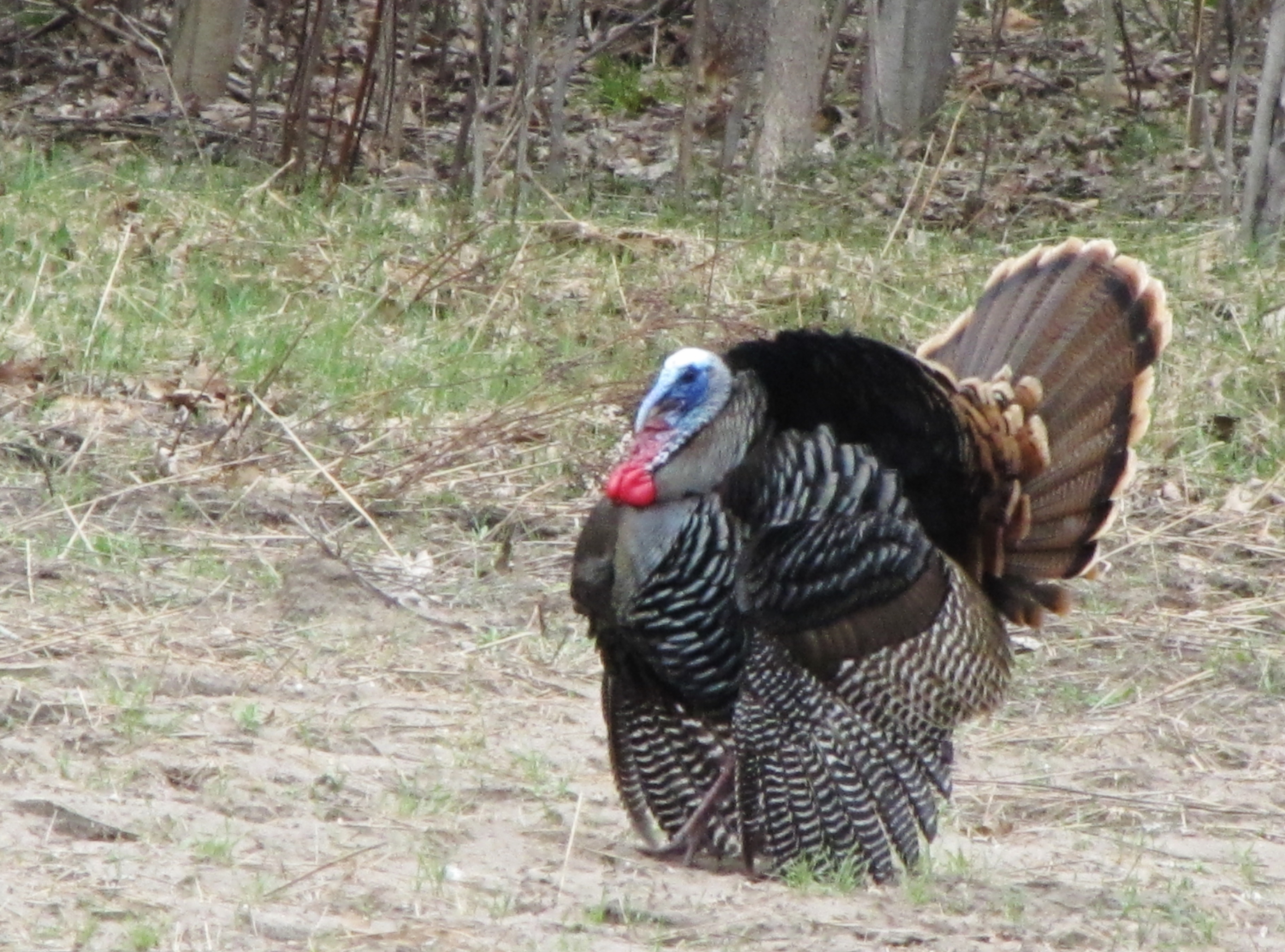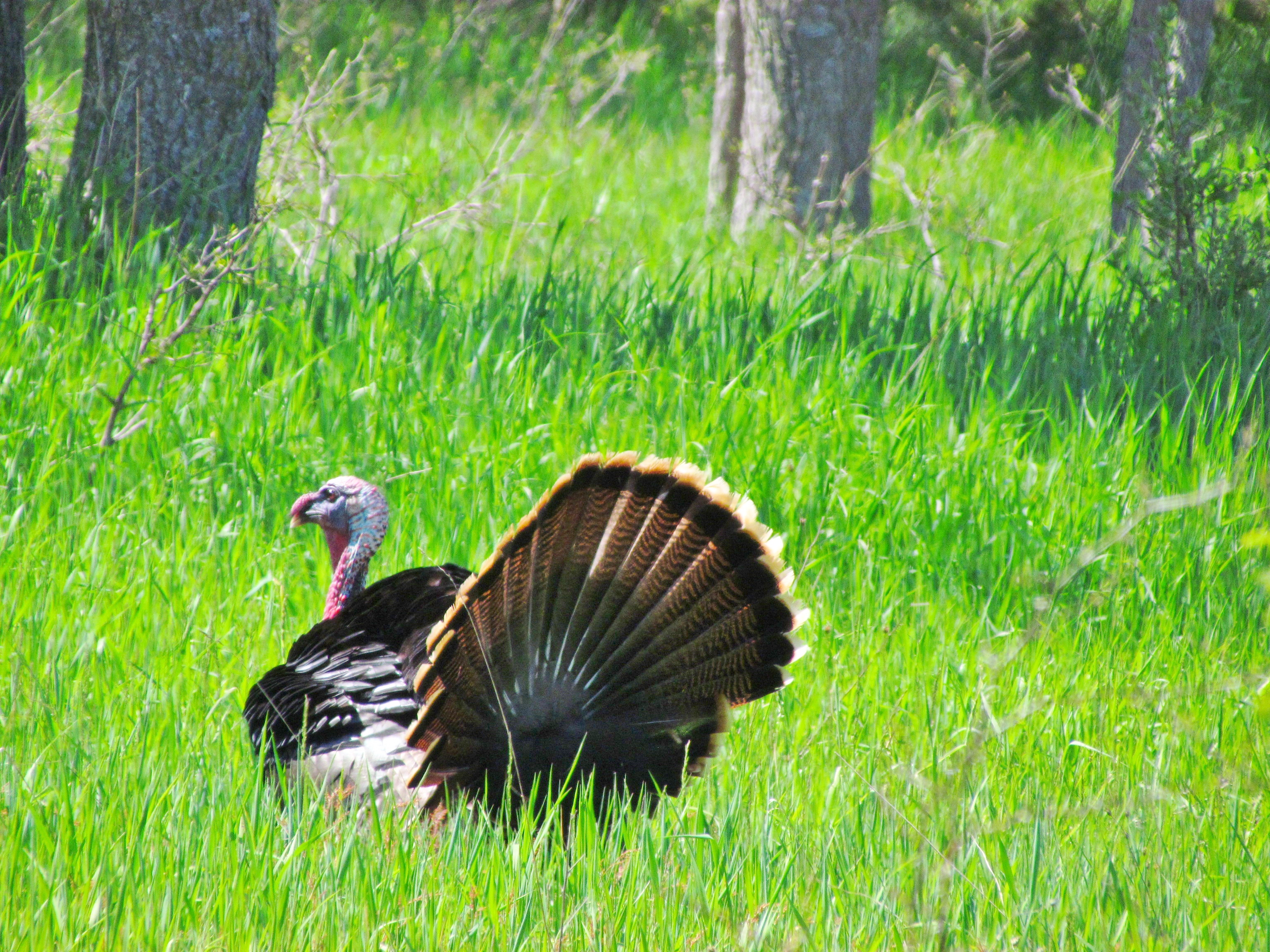WILDER SIDE OF OAKLAND COUNTY
Meleagris gallopavo, the Wild Turkey, is strutting his stuff on the wilder side of Oakland County. This colorful bird, wanted by Benjamin Franklin as our national emblem, spreads his tail feathers, gobbles up a storm and dances about with dramatic wing drags. It’s all in effort to show his dominance and lure the hens. The show starts every morning in the early days of May, just as sunlight filters through the trees.
The Wild Turkey is one of the largest birds of Oakland County and bears little resemblance in coloration and behavior to its lily-white, domesticated kin that grace our Thanksgiving dinner tables. They thrive in expansive parklands, especially those located near farm fields and woods. Addison Oaks, Highland Oaks, Independence Oaks, Lyon Oaks, Orion Oaks, Rose Oaks and Springfield Oaks county parks provide rich slices of excellent habitat for these brightly colored birds. It should be noted that there is nothing subtle about a Wild Turkey, whose feathers include iridescent shades of copper, bronze, red and gold. They are polygamous omnivores, mating with the hens of their harem and eating most anything they find while foraging. Their spring diet is diverse and includes grains, seeds, old nuts, insects and grubs.
The gobbler, or Tom, is the male Wild Turkey and boasts three physical features that prove irresistible to most of the ladies: The beard that dangles from the center of the male’s breast is actually a cluster of specialized feathers. The fleshy red mass over the beak is the snood and the bright red flap of flesh on the bare skin of the neck and throat is the wattle. The colors vary as the turkey courts and gobbles. When really excited, the head takes on a bluish hue. If the head turns red, the male is ready to fight. Do these colorful physical features really attract more females as the gobbler struts his stuff? Only the hens know for sure.
After mating, the hens nest in secluded areas on the ground, a hazardous time for the eggs and the poults (baby turkeys) that follow. Coyotes are a clear and present danger during their noisy breeding season and the secluded nesting season that follows. That being said, turkeys have adapted well to life in Oakland County and their populations are growing. Once the poults fly, life gets a bit easier for the flock and by the time they are adults, they too can fly—at the outstanding speed of 50 mph.
Text and photos by Jonathan Schechter, Nature Education Writer for Oakland County Parks. schechterj@oakgov.com
Visit Oakland County Parks for details on all 13 county parks, including spring programs and trails.






[…] dozens of species of wildlife. Local connoisseurs of the abundant branch-bending fruit include wild turkeys, raccoons, white-footed mice, opossums, cedar waxwings, cardinals, sparrows, goldfinch, mallard […]
[…] a few Wild Turkeys kicking the leaves in search of acorns or even an Eastern Garter Snake stirred to activity by […]
[…] trail nears Big School Lot Lake. The sleek Cooper’s Hawk zips after birds in the woodlands and turkeys may be encountered trotting on a trail. In a few more weeks, adventuresome cross country skiers […]
[…] from the swamp loving barred owl, were under one tree, and another tree was the obvious roost for wild turkeys. How do I know that? A mat of turkey poo covered decaying leaves confirmed their night roost. Soft, […]
[…] sandhill crane, great horned owl, screech-owl, barred owl, red-tailed hawk, Cooper’s hawk, turkey, turkey vulture, tree swallow, eastern bluebird, muskrat, beaver, white-tailed deer, osprey and […]
[…] food sources diminish. Among the species that feed on the berries are Eastern Bluebirds, Catbirds, Wild Turkeys, and Ruffed Grouse. Woodpeckers and nuthatches also tear at the clusters in search of hidden meaty […]
[…] are at risk by the very presence of wildlife. Negative comments about opossums, raccoons, deer, wild turkeys and the much maligned Eastern Coyote seem to spread like wildfire as Thanksgiving draws near. Some […]
[…] the time spring peepers sing and bats flutter about with an encore performance as the moon sets and wild turkeys gobble. My wait goes on for this year’s first magical sky-dance, a wild moment of nature backlit […]